

The process of ground freezing is to convert soil moisture into ice by cooling it. The soil water thus solidified has the effect of cementing it, which then becomes impervious and strong.
The technique consists in installing, in the ground, deep freezing pipes close enough to each other, in order to obtain frozen soil cylinders which, once they are welded to each other, can constitute a strong and impervious enclosure. Depending on the arrangement of the tubes, it is possible to produce "frozen soil" enclosures of very different shapes: vertical wall, ring, slab.
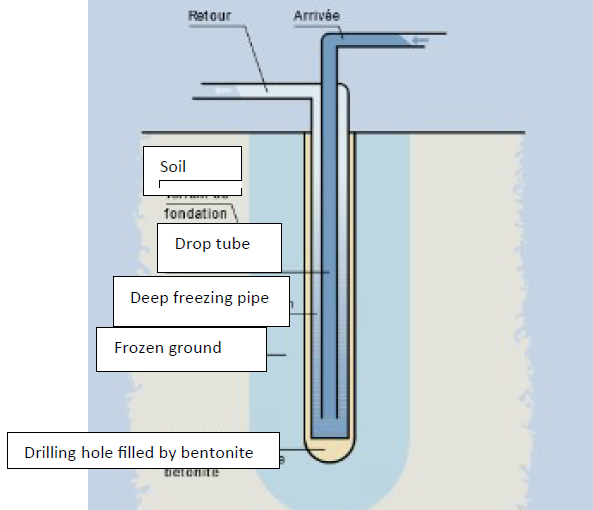
© MAX BOGL
Detail of a freezing tube
It was in the mines that the first freezing of the soil took place. Indeed, this process designed by the German Poetsch, received a first application in 1883 for sinking wells in lignite mines in Scheidlingen, Saxony. The first tunnel application dates back to 1888 when a tunnel was excavated in Stockholm in clayey aquiferous sands.
This special soil treatment process is used in aquifer soils as part of civil engineering works.
The areas of application vary from ground stabilization for construting tunnels, wells, and to facilitate the breakout/breakin of tunnel mining to or from wells. This method is suitable for complex environments near structures sensitive to deformation and sites difficult to access. It also allows the resumption of work following incidents of construction (breaking, etc.).
Finally, ground freezing has non long term effect on the environment because once the frozen ground melts, the groundwater and sols are returned to their original states.

© MAX BOGL
Different uses of freezing
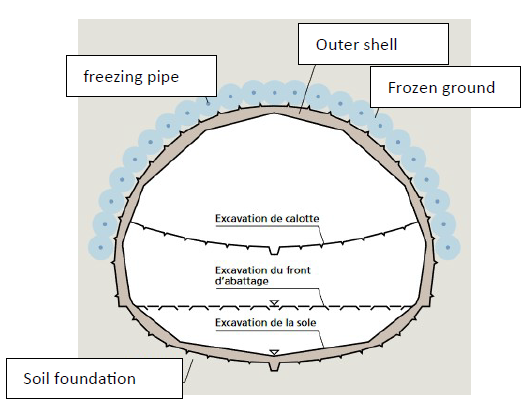
© MAX BOGL
Different methods are used for freezing soils:
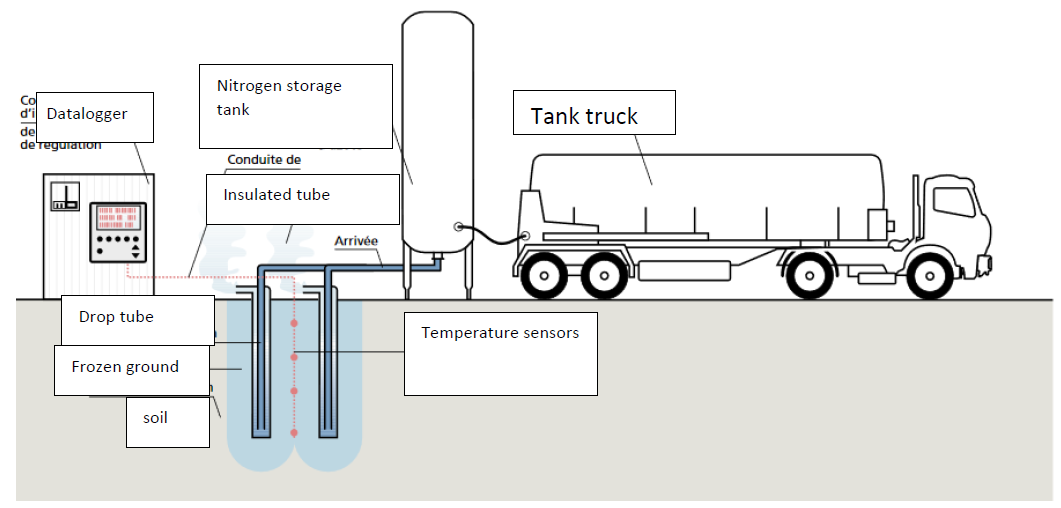
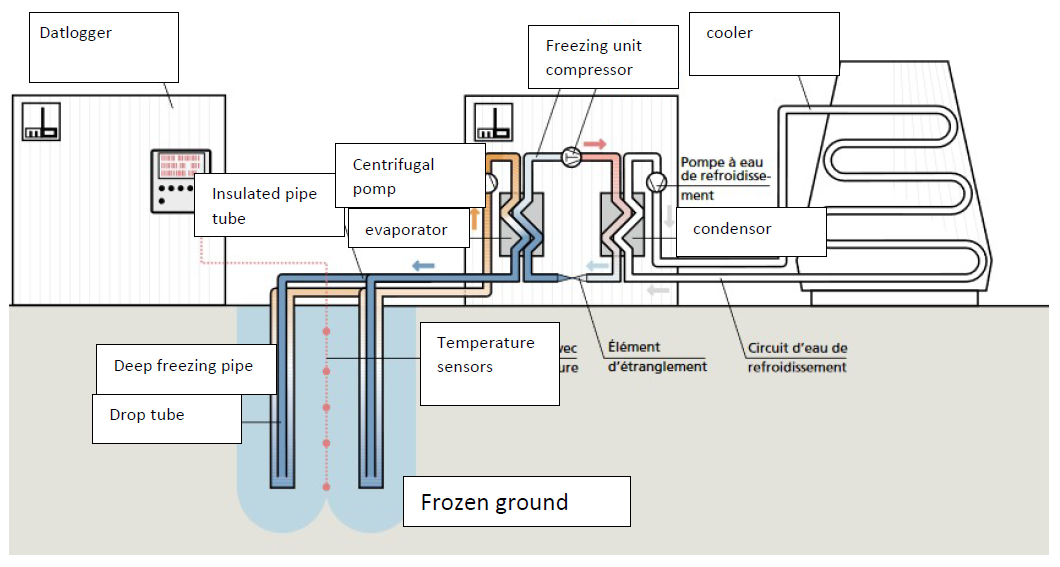
As part of ground freezing operation, the implementation of control and monitoring devices is essential to the success of the project.
These devices include temperature probes in the freezing device (tubes, refrigerating units, etc.) but also in the ground to verify at any time the minimum required temperature ensuring stability.
Soil displacement instrumentation devices are also installed to observe the behavior of the frozen massif, adjacent soils and adjacent structures whose stability must be ensured during the works.
Given the volume of measurements generated by the monitoring of this work, measurement software is used to record the various readings and to represent them in a synthetic and graphic way in real time to the site managers.
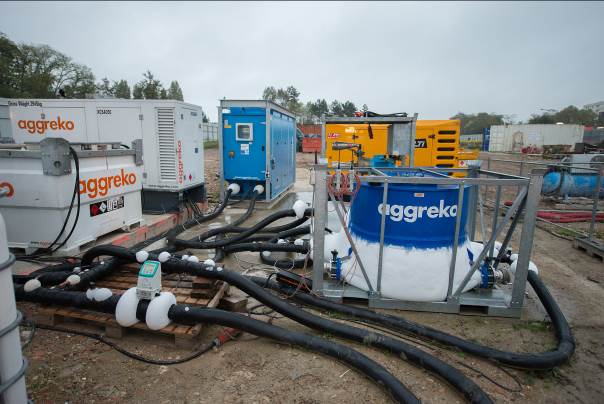
© SOLETANCHE BACHY

© CHRISTOPHE FILLIEULE FOR SOLETANCHE BACHY
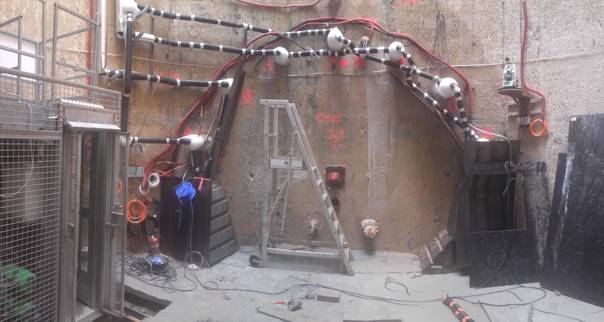
© SOLETANCHE BACHY
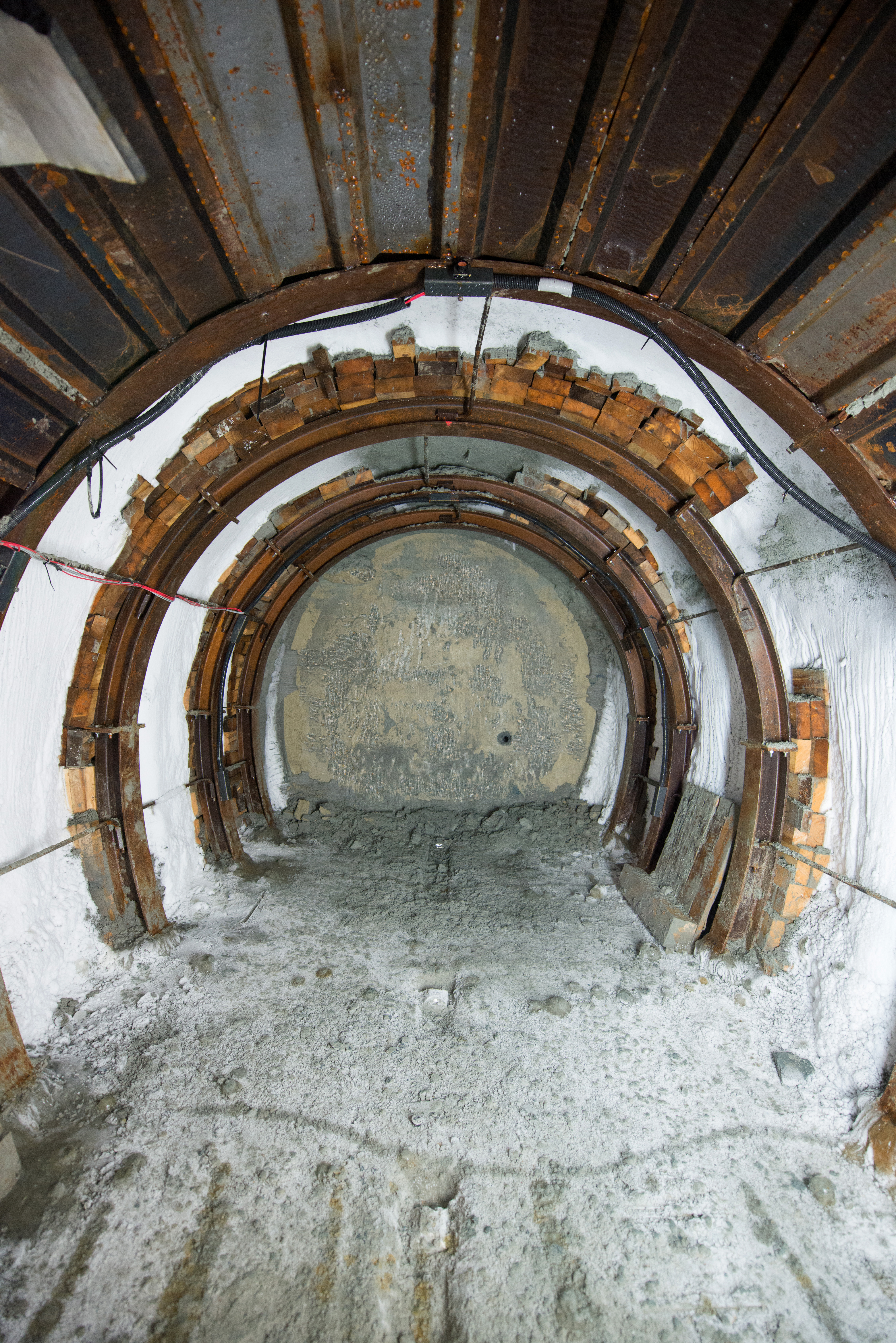
© CHRISTOPHE FILLIEULE FOR SOLETANCHE BACHY